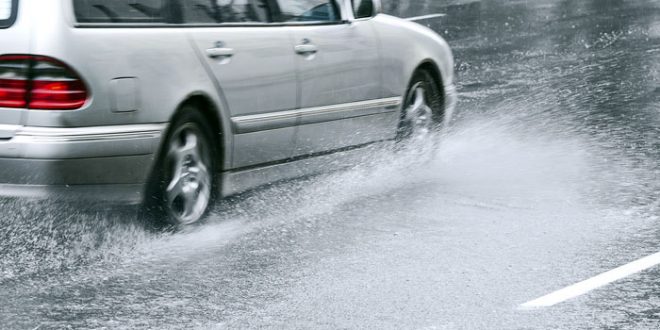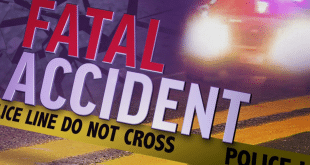Indianapolis, IN – Oct. 3, 2016 – The arrival of Autumn often equates to increased precipitation throughout Indiana. As a result, AAA Hoosier Motor Club has the following safety tips for wet-weather driving…
- Six inches – As little as six inches of water can cause you to lose control of your car and potentially stall your engine.
- Seek higher ground – If your vehicle stalls or is suddenly caught in rising water, leave it immediately.
- Never drive through standing water – Standing water can be deceiving and motorists should avoid it. No matter how shallow it may appear, water may be concealing downed power lines, be deeper than it appears, or have significant force from flooding, etc.
- Slow down, brake early and drive with greater caution and alertness – Drivers are more likely to lose control of the vehicle when roads are wet so reduce speed and keep your eyes and mind on the road. Brake early, but not hard, to allow the time needed to slow the car down.
- Increase following distance – This is even more important when driving near vans, recreational vehicles and cars pulling trailers that may be adversely affected by the wind.
- Use the central lanes. When driving during heavy rain, use center lanes of the road (without straddling the yellow line). Avoid outside lanes where the water collects at curbside.
- Know your vehicle – Light cars, vans and other “boxy” vehicles have a tendency to be blown by strong gusts of wind.
- Watch for hydroplaning – No car is immune from hydroplaning on wet surfaces, including four-wheel drive vehicles. Even if brakes work under normal conditions that doesn’t mean they will react the same on slippery roads where tires roll with less traction. Also, turn off cruise control as it can cause hydroplaning.
- Use your defroster – Keep the air inside your car dry and prevent windows from fogging by using your defroster along with your air conditioner.
- Take the nearest exit – If conditions worsen to the point where there is any doubt about your safety, take the nearest exit. Don’t just stop on the shoulder or under a bridge. If your visibility is compromised, other drivers may be struggling too.
“Many motorists view rainstorms as more of an inconvenience than a hazard. As a result, drivers tend to be less cautious than they should be,” said Greg Seiter, public affairs manager with AAA Hoosier Motor Club. “The most important steps to take when driving in wet and windy weather are to buckle up, slow down and keep a safe distance from the car in front of you.”






